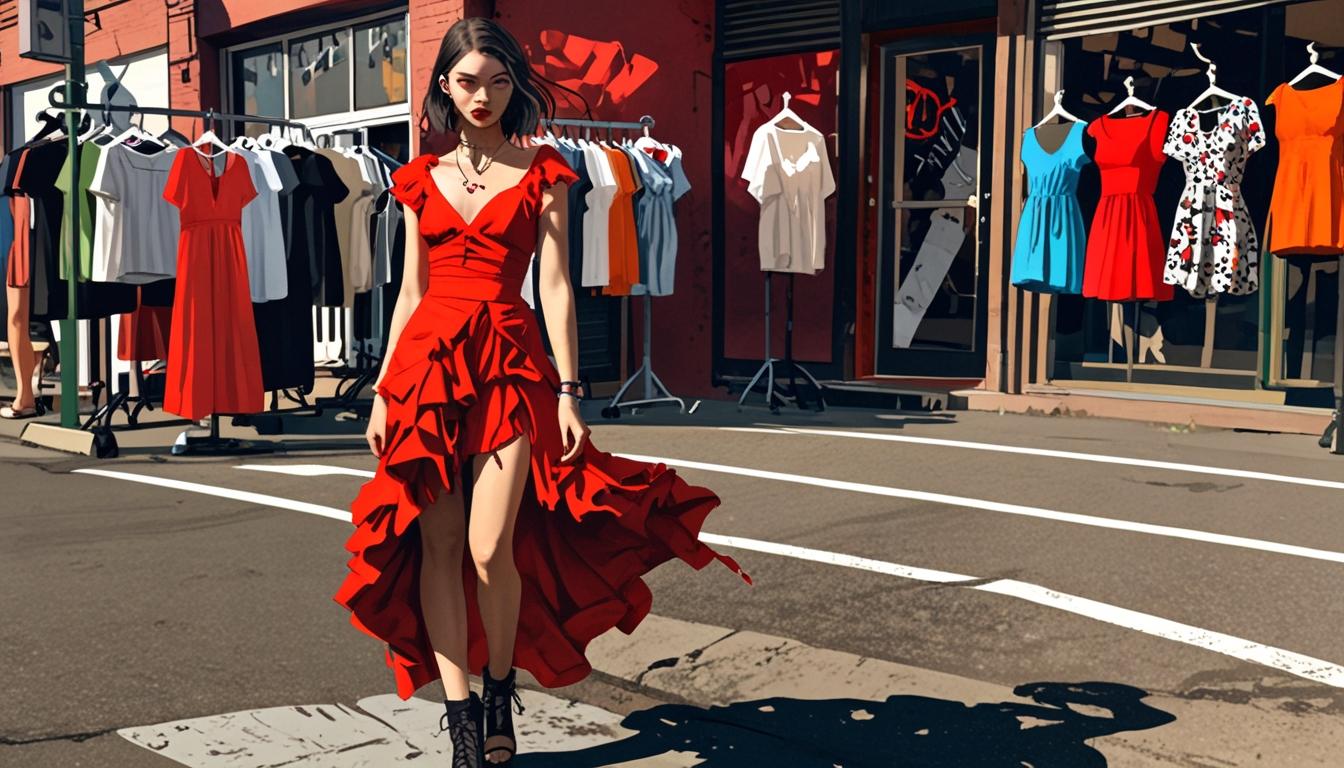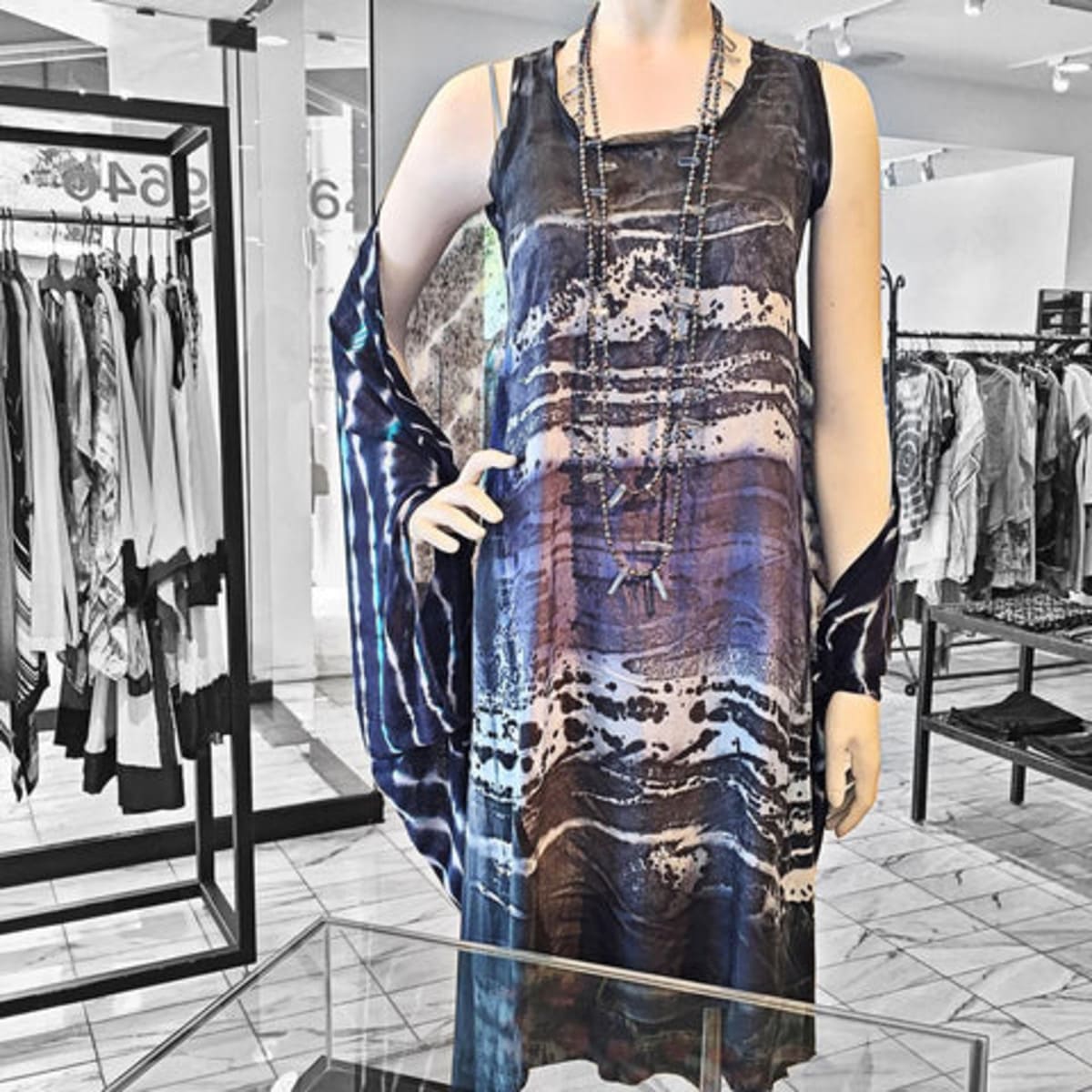From a 2001 sidewalk runway featuring outfits pieced from torn T-shirts to today’s sophisticated sustainable fashion programs and innovative local designers, Portland’s fashion scene has pioneered a creative and ethical approach to clothing that balances art, functionality, and environmental responsibility.
In 2001, a significant moment unfolded on a Portland sidewalk that would later be recognized as a marker of the city’s vibrant DIY fashion scene and early engagement with sustainable fashion principles. Glass Candy singer Ida No stood on a makeshift runway outside the Seaplane boutique, donned in a strikingly crafted red dress pieced together from torn and tied T-shirts. This sidewalk runway show marked Portland’s foray into an anti-establishment, resourceful fashion era characterized by reworked and upcycled clothing, long before sustainability became a widespread marketing term.
Seaplane’s first fashion show, recalled by designer Adam Arnold during an archival exhibition at Portland State University (PSU) last fall, “opened a zeitgeist.” Arnold, who has been a vocal advocate for utilizing Portland’s accessible resources—such as cheap rent and materials—believed that any designer ignoring the city’s advantages was “completely stupid.” At that time, going green was less about marketing and more a punk-inspired choice driven by creativity and necessity rather than climate change advocacy.
Marjorie Skinner, curator of the PSU show, noted the lasting influence of these early days, stating, “having a relationship with your clothing is inherently going to put the brakes on the disposability of it.” This ethos gained momentum through the early 2000s but began to wane around the financial crisis of 2008, coinciding with the rise of fast fashion giants like Shein and Forever 21. These brands introduced a flood of inexpensive, promptly produced clothing that prioritized affordability and variety over durability and quality, fundamentally shifting consumer relationships with clothes toward a disposable mindset.
The environmental and ethical consequences of fast fashion have since drawn scrutiny, with issues such as microplastic pollution, fabric waste, and industrial pollution rising to the fore. In response, the fashion industry gradually developed the concept of “sustainable fashion,” a broad and sometimes ambiguous category encompassing garments made from renewable materials, locally produced items, and even clothing upcycled from existing pieces. Yet the term’s proliferation as a marketing buzzword has diluted its impact and may have exacerbated some problems it aimed to solve.
Today, sustainable fashion is viewed as a complex ecosystem rather than a simple sales pitch. Designers are increasingly focused on creating garments that serve meaningful roles in people’s lives, emphasizing longevity and personal connection over trendiness. Boutiques and thrift stores play an essential role in this ecosystem, contextualizing garments for buyers and encouraging more thoughtful consumption.
At Portland State University, Alison Heryer leads a sustainable fashion program that equips students with comprehensive insights into all stages of clothing creation and recycling—addressing the typical disconnects within the industry. Heryer emphasized that her students hold rigorous ethical standards and critically evaluate what counts as truly sustainable. She said, “Fashion in general is such an intersectional practice,” highlighting how the program links fashion to social justice, engineering, and gender studies, among other fields.
Portland designers also contribute innovative perspectives on sustainability. Nur Abbas, the founder of the locally based brand gnuhr, describes sustainable fashion as a “minefield” without a clear solution, opting instead to focus on creating minimal waste and long-lasting value through ultralight technical garments. Abbas’s experience with notable European fashion houses informs his approach to engineering patterns that minimize fabric waste, with designs like the “Tubular T,” a shirt constructed from a single tube of fabric with just one seam.
“Ultimately, I want to create something that has value and keeps its value,” Abbas explained, emphasizing durability and cultural significance in his creations.
Retailers and resale shops in Portland further shape the sustainable fashion culture. Stores like Stand Up Comedy treat clothing as art objects with meaning rather than disposable commodities, while shops such as Deep Lake prioritize consignment and resale, providing an alternative shopping experience that extends clothing’s lifecycle.
Former Seaplane proprietors Holly Stalder and Kate Towers continue the tradition of hands-on, sustainable design at their boutique Fine Art Fruit. They embrace methods like using deadstock fabrics and upcycling materials, maintaining a commitment to local production and thoughtful design without explicitly labeling their work as sustainable fashion.
Portland’s fashion scene, originating from grassroots upcycling exhibitions to an intricate network of designers, educators, and retailers, reflects a nuanced journey. This evolution underscores a community-wide discourse around clothing that balances creativity, sustainability, and functionality, shaping how garments are made, sold, used, and valued in one of America’s most influential style hubs.
Source: Noah Wire Services




Hey, everyone. Been looking at 74bet1 recently. It’s visually appealing and seems to have a good variety. Can’t complain so far. Do check it out. 74bet1